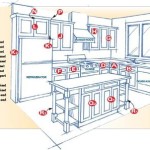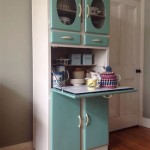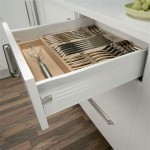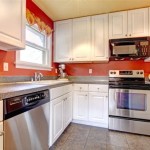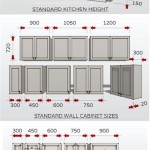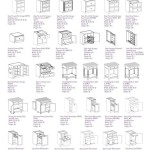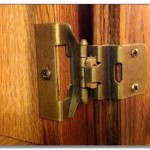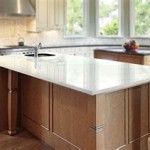Cost of Installing Kitchen Cabinets in Kenya
Renovating a kitchen is a significant investment, and cabinetry often represents a substantial portion of the budget. Understanding the factors influencing the cost of kitchen cabinet installation in Kenya is crucial for effective planning and budgeting. This article explores these cost drivers and provides valuable insights into making informed decisions.
Material Selection
Cabinet material significantly impacts the overall cost. Various options are available in the Kenyan market, each with its price point.
*Solid Wood:
Known for its durability and aesthetic appeal, solid wood is a premium option and tends to be the most expensive. Species like mahogany, mvule, and cedar are popular choices but come at a higher cost compared to imported woods like pine or MDF. *Medium-Density Fiberboard (MDF):
A more budget-friendly alternative, MDF offers versatility in design and finishing. It is susceptible to water damage if not properly sealed. *High-Density Fiberboard (HDF):
HDF is denser and more durable than MDF, offering better resistance to moisture and wear, making it a mid-range option. *Particleboard:
The most economical choice, particleboard is made from wood chips and resin. However, it is less durable and prone to damage compared to MDF or HDF.Cabinet Style and Design
The complexity and intricacy of the cabinet design directly affect labor and material costs. Simple, standard designs are generally more affordable than custom-made or highly detailed cabinetry.
*Ready-to-Assemble (RTA) Cabinets:
RTA cabinets are a cost-effective option, requiring assembly on-site. *Custom-Built Cabinets:
These cabinets are designed and built to specific requirements, allowing for greater flexibility in size, style, and finish but come at a premium cost. *Semi-Custom Cabinets:
Offer a balance between affordability and customization, with pre-fabricated units modified to suit individual needs.Size and Configuration
The overall size of the kitchen and the number of cabinets required directly influence the project's cost. Larger kitchens with more cabinets naturally necessitate more materials and labor, leading to higher expenses.
*Linear kitchens:
Typically require fewer cabinets and less complex installation, resulting in lower costs. *U-shaped and L-shaped kitchens:
Often involve more cabinetry and countertop space, increasing the overall cost. *Island kitchens:
Adding an island involves additional cabinetry, countertop material, and potentially plumbing and electrical work, significantly increasing the project budget.Hardware and Accessories
Hardware choices, such as handles, knobs, hinges, and drawer slides, contribute to the overall cost. Opting for high-end designer hardware will inevitably increase expenses compared to standard options.
*Basic hardware:
Offers functionality at a lower cost. *Premium hardware:
Can significantly elevate the aesthetic appeal but comes at a higher price point. *Soft-close mechanisms:
While adding to the cost, they provide enhanced functionality and durability.Installation Costs
Labor costs for installation vary based on the complexity of the project, the installer's experience, and location. It's essential to obtain multiple quotes from reputable installers to compare pricing and ensure quality workmanship.
*Experienced installers:
Typically charge higher rates but offer greater expertise and efficiency. *Location:
Installation costs may vary depending on regional labor rates and accessibility to the project site.Countertops and Backsplashes
While not directly related to cabinet installation, countertops and backsplashes are integral parts of a kitchen renovation and should be factored into the overall budget. Materials such as granite, quartz, and marble significantly influence the project cost.
*Laminate Countertops:
Offer a budget-friendly option. *Granite and Quartz Countertops:
Represent a mid-range to high-end option, offering durability and aesthetic appeal. *Tile Backsplashes:
Provide a cost-effective and customizable backsplash solution.Additional Costs
Beyond the core components, several additional costs can contribute to the overall kitchen cabinet installation budget.
*Demolition and Removal of Existing Cabinets:
Involves labor and disposal fees. *Plumbing and Electrical Work:
May be necessary for relocating sinks, dishwashers, or lighting fixtures. *Painting and Finishing:
If cabinets require painting or staining, this adds to the overall cost. *Permits and Inspections:
Depending on local regulations, permits and inspections may be required, adding to the project expenses.Careful consideration of these factors and obtaining detailed quotes from reputable contractors will empower homeowners in Kenya to make informed decisions and effectively manage their kitchen cabinet installation budget.

Cost Of Kitchen Cabinet Design And Installation In Kenya Ebuild

Cost Of Kitchen Cabinet Design And Installation In Kenya Ebuild

Best Kitchen Interior Designs In Kenya S 0799922285

Kitchen Cabinets Installers And Wardrobes Fittings

Cost Of Kitchen Cabinet Design And Installation In Kenya Ebuild

Kitchen Cabinets China Making Kenya Cabinet Made In Com

Kenya Wood Grain Melamine Kitchen Cabinet Oppein

Kitchen Designs And Cabinets Installation In Kenya

Kitchen Designs And Cabinets Installation In Kenya

Cost Of Kitchen Cabinet Design And Installation In Kenya Ebuild
Related Posts

